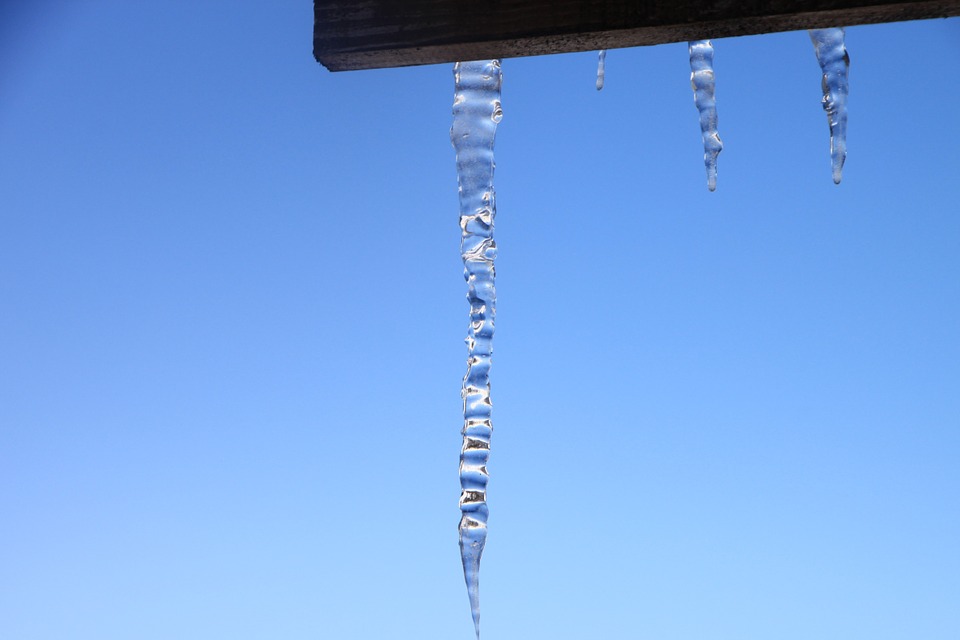
Here in Idaho, we have harsh winters with a lot of snow and varying temperatures. This is the perfect recipe for snow to accumulate on your roof and for ice dams. In valley areas, ice dams can melt and easily slide away because temperatures do not rise sharply. With no warning, the ice melts and causes roof damage and leaking. In higher elevations, ice dams are a major issue due to the large amount of snow that begins accumulating on the roof early in the winter season. The more snow and ice, the worse the ice dams can get.
Just because your roof is new doesn’t mean you cannot have an ice dam. Most ice dams develop on the edge of your roof. Be sure to monitor the weather and your roof for signs of ice dam formations. Here are some signs that your property may be in danger:
- If the icicles are confined to the gutters and there is no water trapped behind them, then an ice dam has not yet formed. Icicles are however a precursor to ice dams. Depending on their location and size, icicles may also pose a danger if they fall off.
- If you notice water stains on the ceiling of exterior walls, that may be an indication that an ice dam has formed an water has penetrated the roof membrane.
What are Ice Dams?
An ice dam is a wall of ice that forms at the edge of the roof, usually at the gutters. When it forms, the water backs behind the ice dam and creates a pool. This pool of water can leak into your home and cause damage to walls, ceilings, insulation and other areas.
What Causes Ice Dams?
Ice dams are usually caused by a heavy snowfall and improper ventilation in the attic. This causes warmer areas in your attic. Even when the outside temperature is well below freezing, snow will begin to melt around these areas. When snow on your roof starts melting, water runs down your roof underneath the snow until it reaches a “colder” section like the soffits or gutters, then it begins to freeze again. This process of thawing and refreezing is what causes an ice dam.
Preventing Ice Dams
Properly ventilating and insulating the attic is the best way to prevent ice dams. Here are a few simple steps that can also help prevent ice dams and condensation in your attic:
- Prevent warm, moist downstairs air from coming into the attic
- Seal all openings that may allow vapor to rise into the attic.
- Keep the attic air temperature below freezing when the outside temperature is in the low 20’s.
- Provide good ventilation to replace warm attic air with cold outside air.
- Use a roof rake to regularly remove the snow from your roof.
- Keep the gutters clean of leaves.
If your property is in danger of ice dams, call the experts at Insight Restoration at 208-427-3042. We have the proper equipment and experience needed to evaluate the situation and offer a lasting solution for your home.

